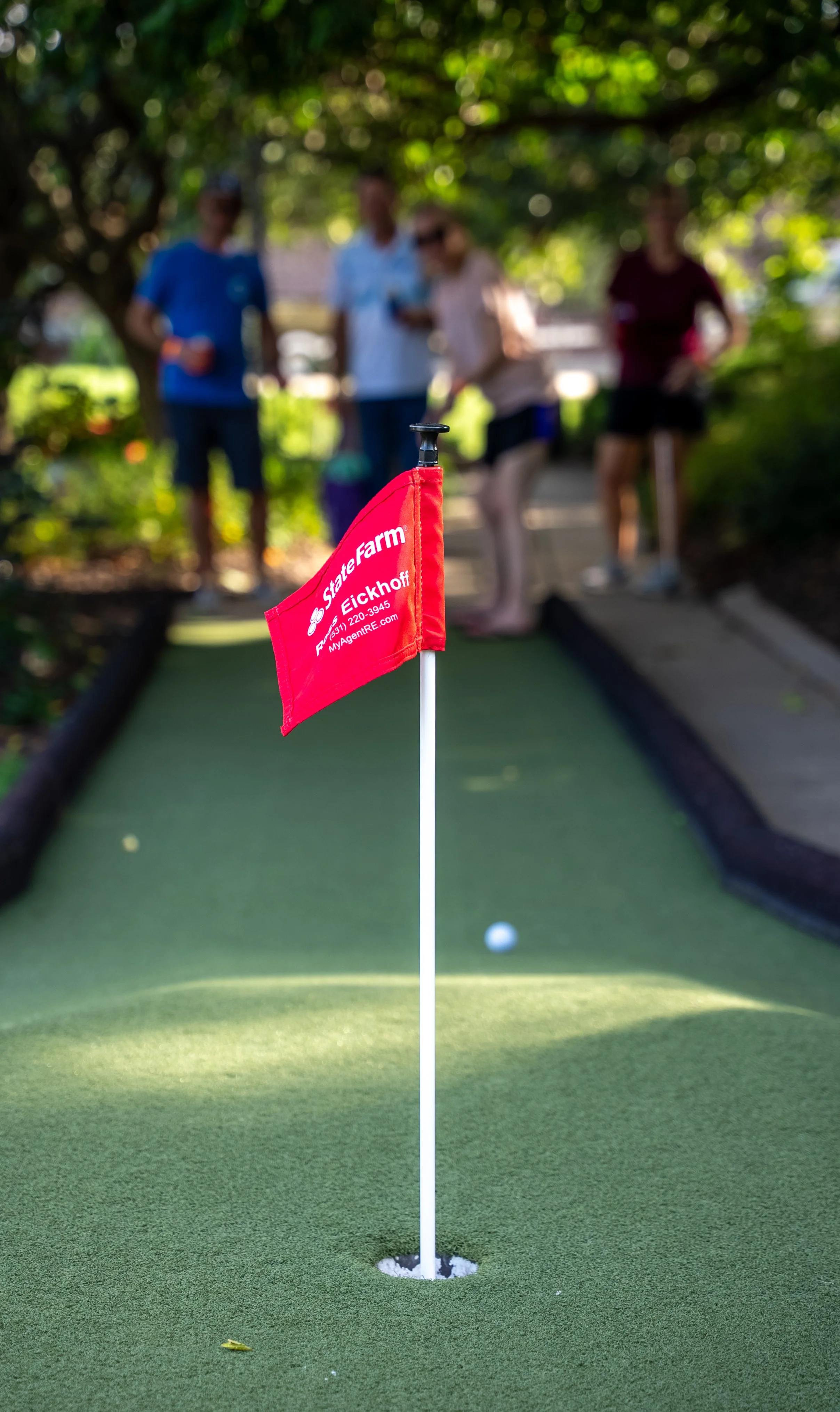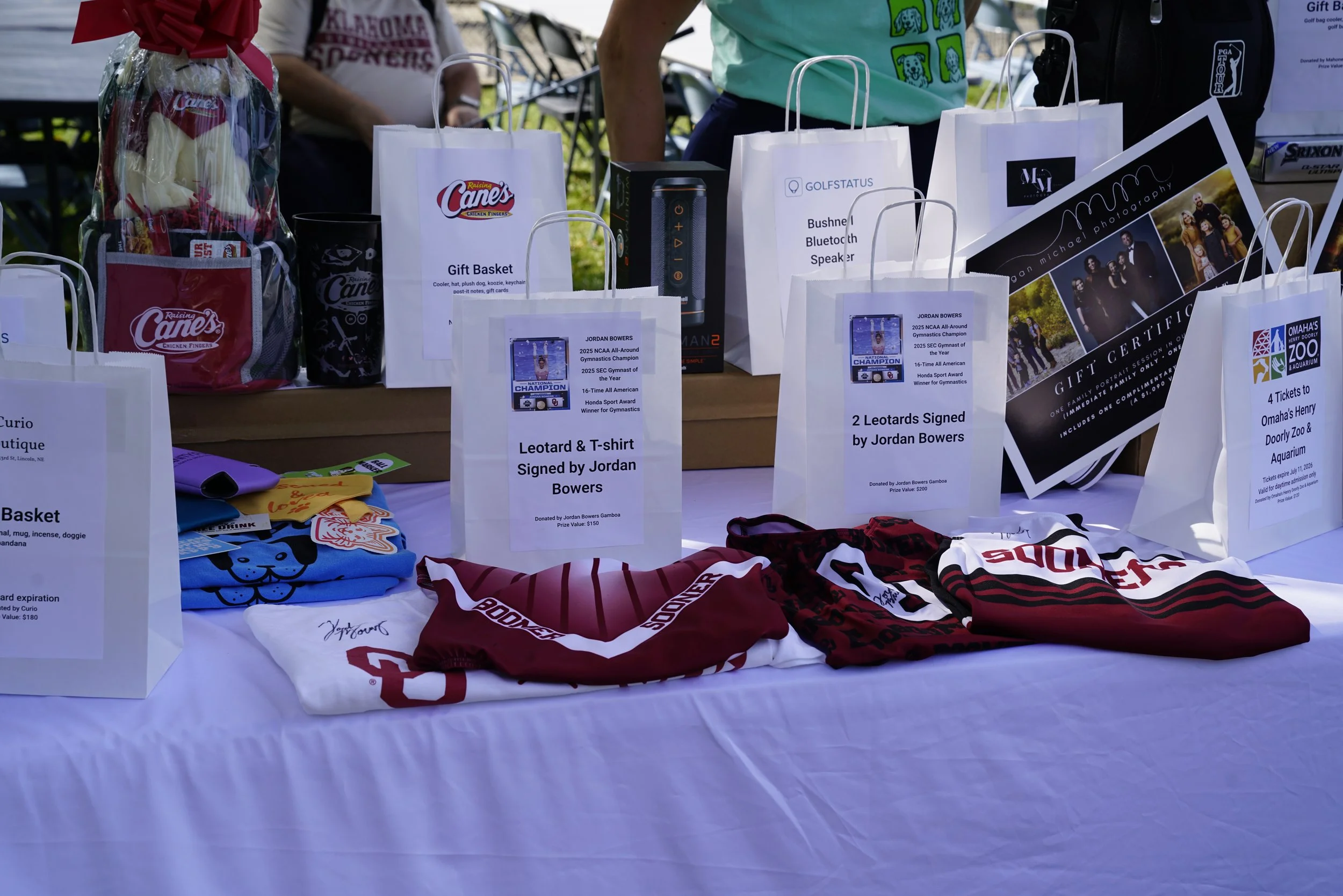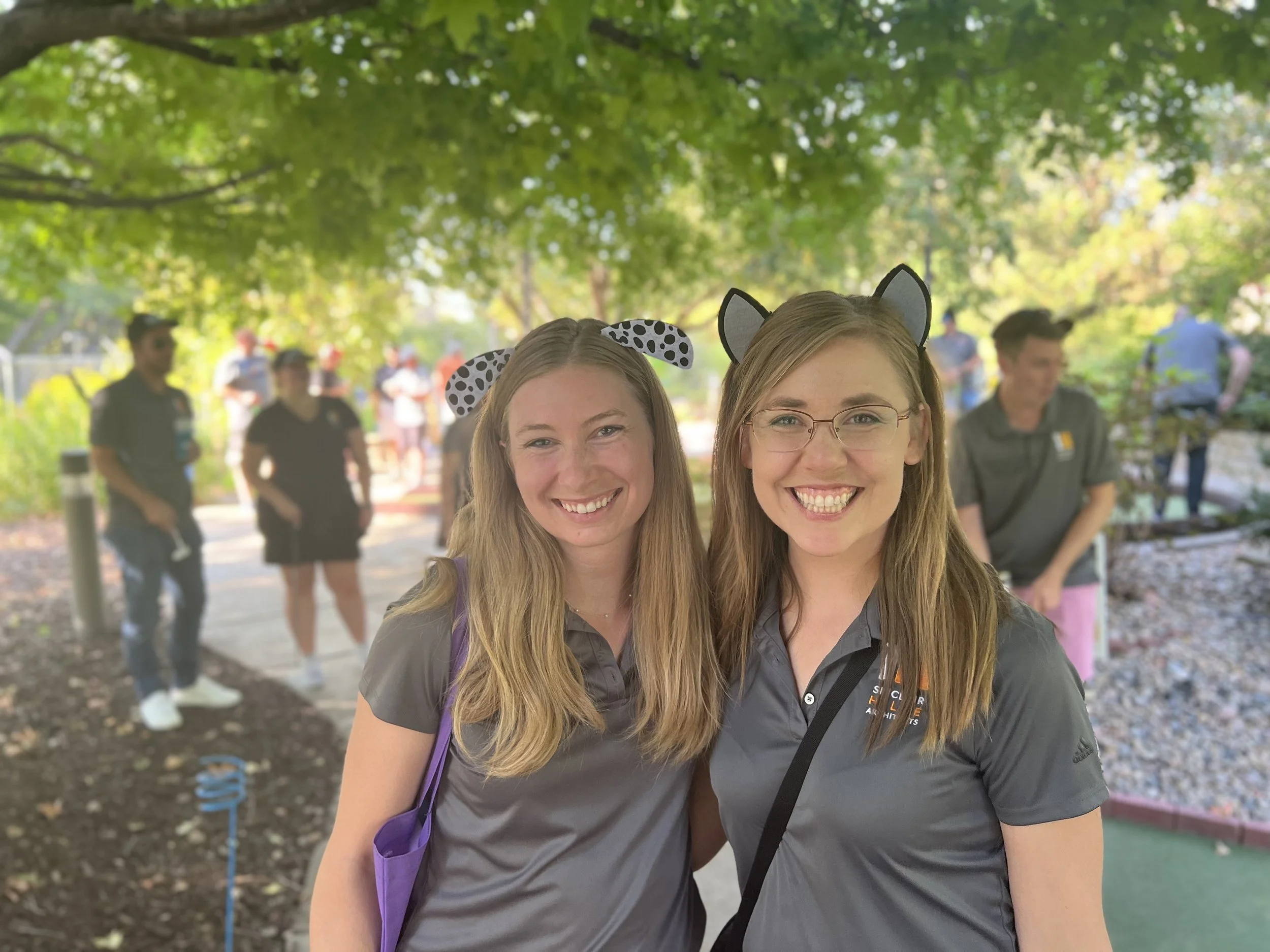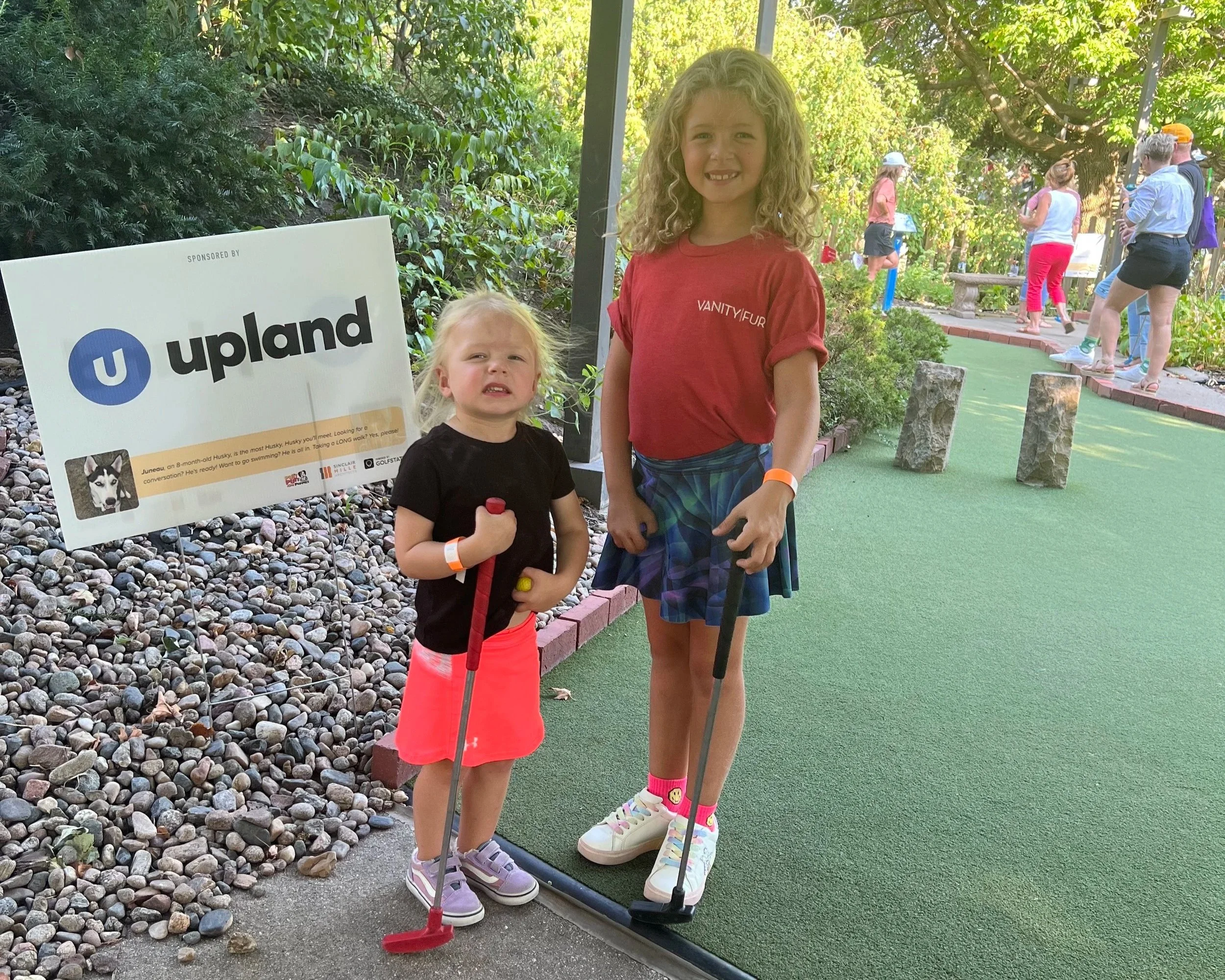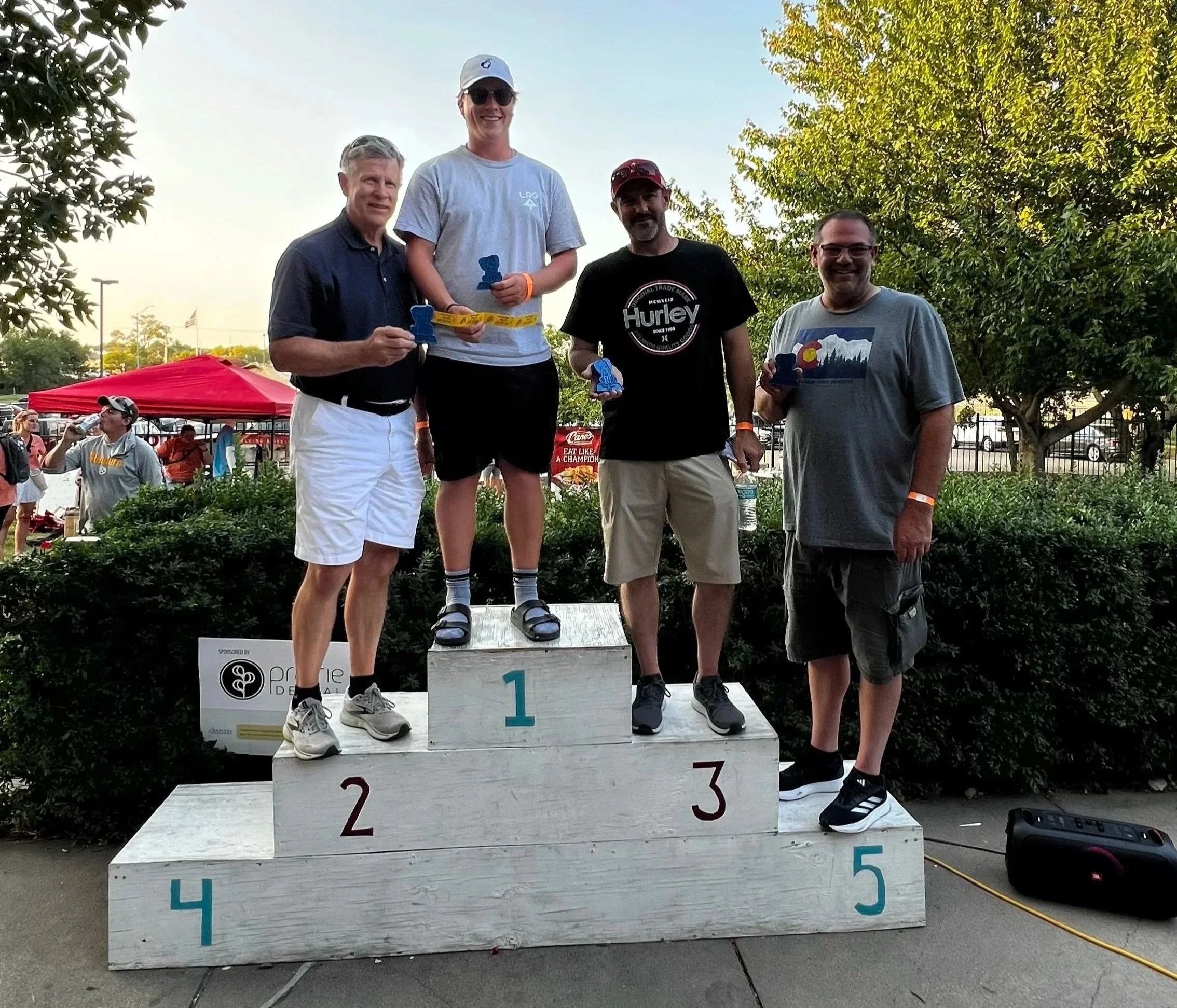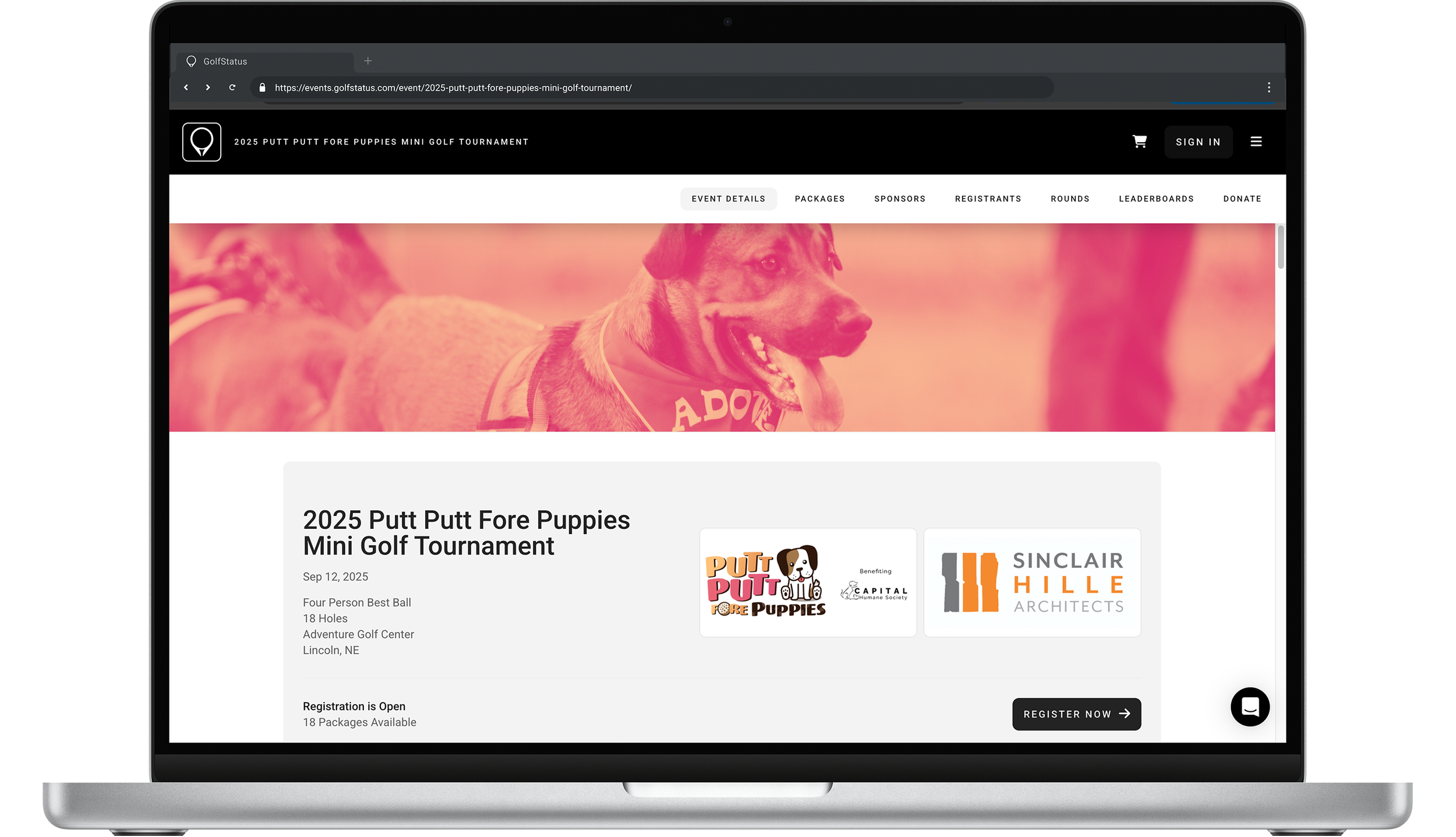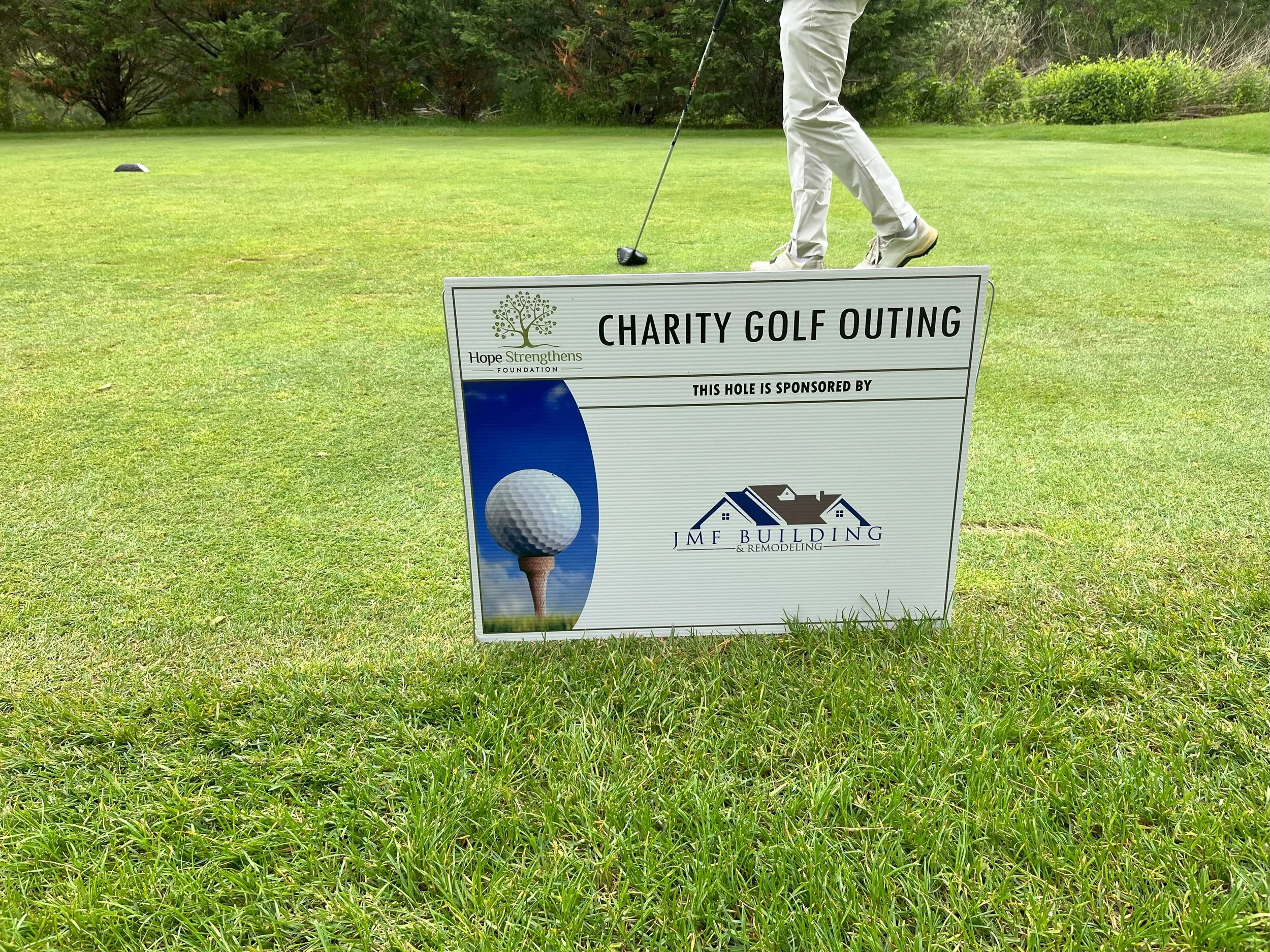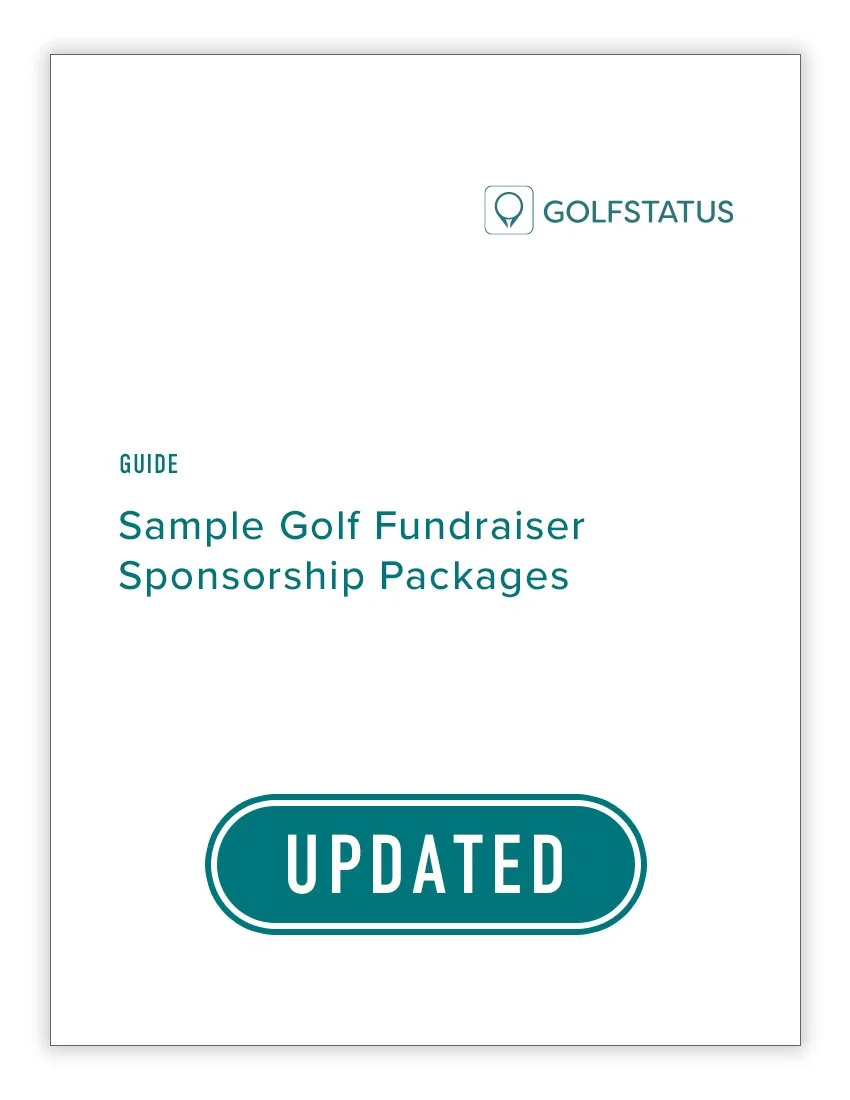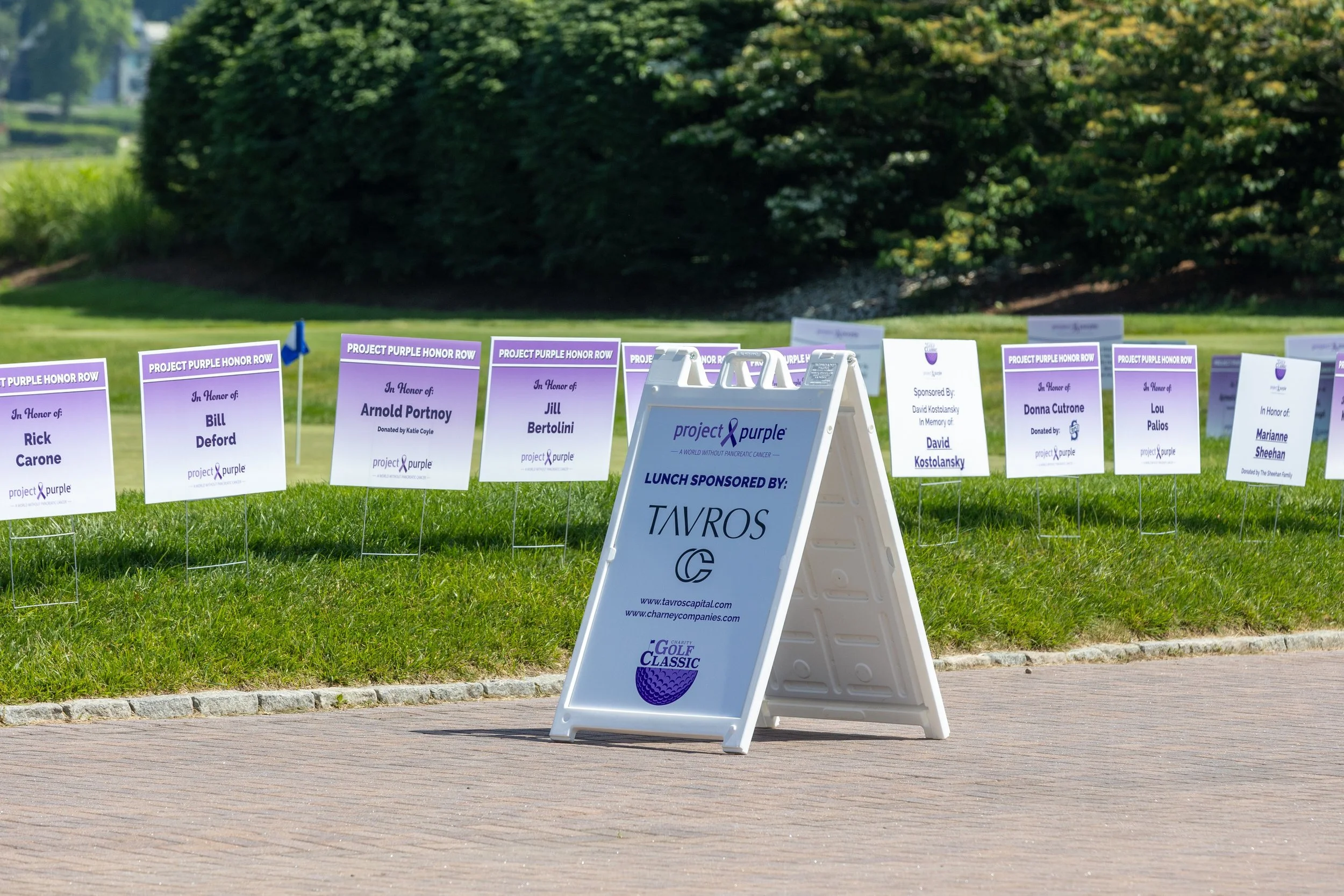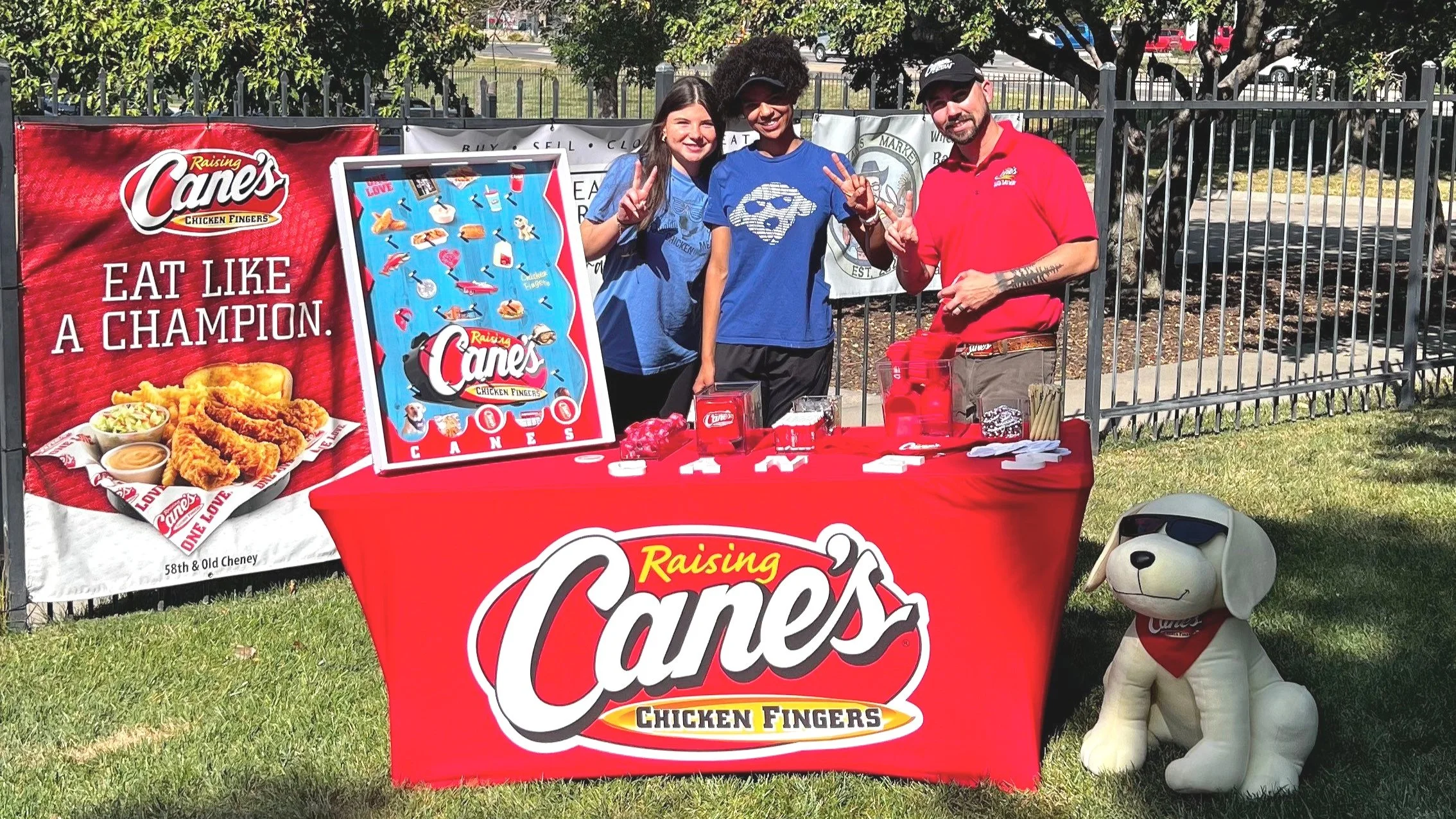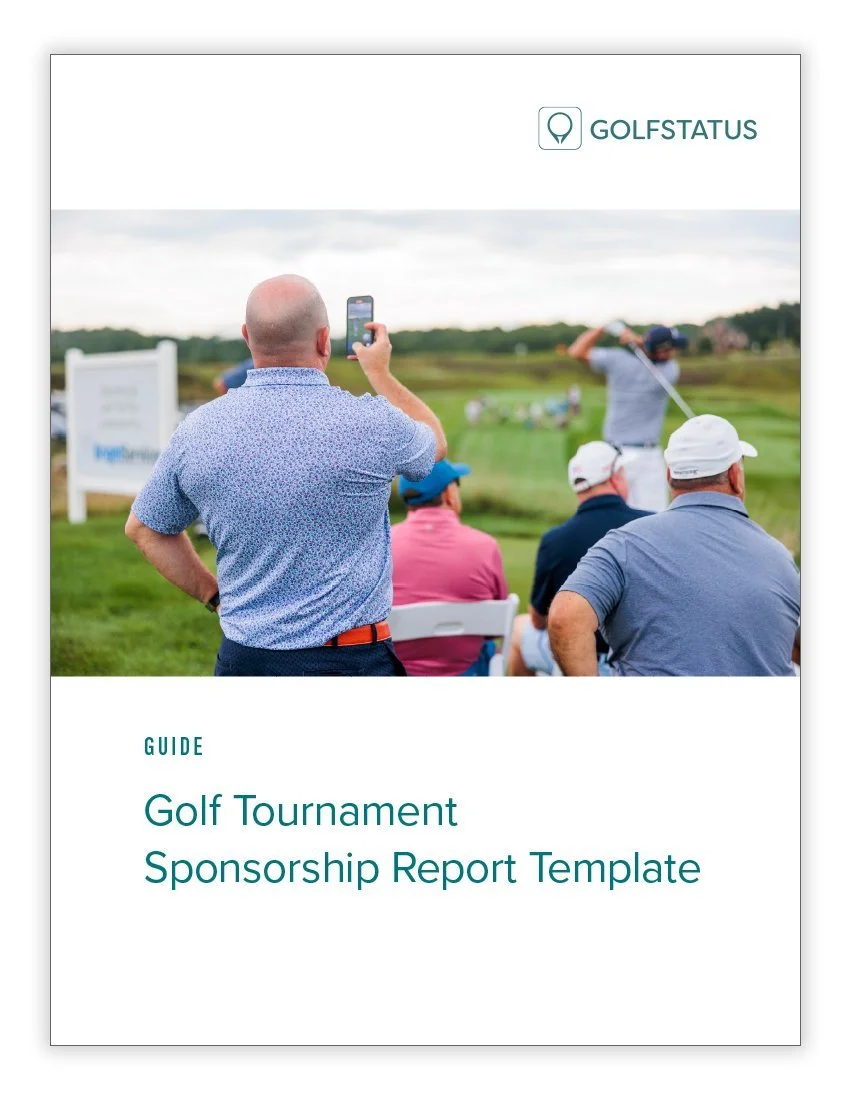by Jen Wemhoff, Communications Manager at GolfStatus
Nonprofit golf event organizers are always looking for new and creative ways to boost fundraising, provide sponsors with real value, and deliver a memorable tournament experience for participants. Fortunately, there’s one tournament extra that does all three: pin flags.
Pin flags are one of the most visible—and versatile—sponsorships your tournament can offer. Why? They offer sponsors and your nonprofit unparalleled branding opportunities, elevate the look and feel of your tournament, and perhaps most importantly, create new ways to raise dollars for your cause.
Here are six reasons why you should add a pin flag sponsorship to your next charity golf tournament.
1. New Golf Tournament Sponsorship Option
To build on success, it’s essential for charity golf tournament organizers to continually add value and increase revenue every year. If your tournament has consistently sold out sponsorships and you want to expand offerings, pin flags are a great choice for tournaments of all types and sizes.
Plus, pin flags are flexible. You don’t have to offer them as a one-size-fits-all package. Instead, you can structure them in different ways that meet your fundraising goals, tournament needs, and sponsor budgets. Some common approaches include:
One sponsor for all 18 holes. This is perhaps the most common approach, and is a great option for a major sponsor who wants maximum visibility.
Split the course. Sell sponsorships for the front and back nine separately, giving two mid-level sponsors the chance to stand out.
Individual hole sponsorships. Give multiple businesses the chance to sponsor a single hole with a pin flag, spreading opportunity across a larger group of supporters.
2. premium visibility across the course
Pin flags are found on every single green and are the focal point of every single hole. That means that sponsor logos and branding are front and center as golfers approach and finish each hole. Put simply, pin flags demand attention!
Even smaller-scale events like mini golf fundraisers or simulator-based events can benefit from this exposure. Pin flags (or creative adaptations of them) are highly visible branding opportunities that make an impression no matter the format of your event.
The visibility offered by pin flags is especially attractive to sponsors who want more than a logo on a banner. Pin flags and the accompanying digital exposure provided by your golf event management platform guarantee that the sponsor’s name is seen repeatedly throughout the tournament.
Even mini golf events can benefit from a pin flag sponsorship!
3. Elevate the Look & Feel of Your Tournament
Custom pin flags instantly upgrade your tournament. They give your event a professional, polished look that stands out to golfers, sponsors, and even golf facility staff. Seeing branded pin flags on every green tells golfers, sponsors, and donors that you take the event seriously and value sponsor relationships. The professional impression can help:
Build credibility with first-time golfers and supporters
Encourage past sponsors to return and level up their investment in your event in the future
Differentiate your tournament from others in the area
Golfers and sponsors appreciate when an event feels well-organized and put together. Details like pin flags may seem small, but they help contribute to an overall professional experience that keeps participants coming back.
4. raise more money
Every additional golf tournament sponsorship represents new dollars for your cause and a new revenue stream for your event and organization. Pin flag sponsorships are especially valuable because they’re premium, high-demand options that many businesses find appealing. Plus, this sponsorship comes with a high ROI, making it worth a higher price point because pin flags:
Offer unprecedented visibility across the golf course
Have a “wow” factor
Give sponsors a unique way to stand out
No matter how you sell pin flags—individually, nine, or 18 holes, the income has the potential to add up quickly.
5. extend the value beyond tournament day
Pin flags don’t have to be a one-and-done piece of event signage! With a little creativity, you can continue to leverage them after the tournament ends to deepen sponsor relationships and raise additional funds. Use them as:
Thank you gifts for sponsors. Invite board, staff, or planning team members to sign the flags and present them to sponsors as a thank-you keepsake.
Auction items or raffle prizes. Frame a flag, signed or unsigned, and include it in your silent auction or offer it as a fun raffle prize.
Dual branding. Print the sponsor’s logo on one side of the flag and reserve the other side for your nonprofit’s logo, the name of a key supporter, or fun messaging. It makes the flag a unique memento that ties your mission to the sponsor’s contribution.
These extra uses add even more value to pin flags, extending the life and impact of the sponsorship while showing sponsors that you’re committed to making their investment meaningful.
Camp Hope Foundation, which provides camp experiences to children with pediatric cancer during their treatment, has campers sign their tournament’s pin flags, which are then auctioned off to raise additional funds.
6. There’s no hassle (with the right partner)
If you’re thinking, “This sounds great, but I don’t have the time to handle all those details on top of everything else,” then you simply need to find the right partner for pin flags.
GolfStatus has a turnkey solution for pin flags—you handle selling the sponsorship, GolfStatus handles everything else, including:
Design. The team works directly with the sponsor or sponsors to secure logos and messaging.
Logistics. The team works with the vendor to ensure everything looks great on the full-color, dye-sublimated flags.
Delivery. Flags are shipped directly to the golf facility (or other chosen location) on time ahead of your tournament.
Letting a partner handle the details makes pin flag sponsorships virtually hassle-free for tournament organizers. You can focus on recruiting sponsors, engaging players, and running your event while GolfStatus ensures pin flags look great and arrive on time.
SAMPLE PIN FLAG SPONSORSHIP PACKAGES
To help you get started, here are a few ideas on how to structure and price pin flag sponsorships. You can adjust them based on your audience, sponsor budgets, and event size.
Entire Course Sponsorship: 18 Pin Flags
One package available.
Exclusive branding on all 18 pin flags across the course
Company name and logo on the event website and sponsor banner
Recognition on social media and email blasts
Opportunity for social media collaboration
Includes one foursome
Price point: $4,000 - $6,000+ (depending on your market and tournament size)
Front or Back Nine Sponsorship: 9 Flags
Two packages available.
Exclusive branding on nine pin flags
Company name and logo on the event website and sponsor banner
Recognition on social media and email blasts
Price point: $2,000 - $3,000+
Individual Pin Flag Sponsorship
18 packages available.
Branding on one pin flag
Company name and logo displayed on the event website
Price point: $250 - $500 per hole
Bundled Hole Sponsorship
18 packages available.
Individual pin flag sponsorship
One hole sign, plus exposure in the digital scoring app.
Company name and logo displayed on the event website.
Price point: $600 - $1,000
Final Thoughts
Pin flag sponsorships check all the boxes: they’re flexible, visible, professional, and lucrative. They create a one-of-a-kind branding opportunity for sponsors and your organization, make your event look sharp, and generate additional dollars for your mission.
Whether you package them as a full set, split them by nine, or sell them individually, pin flags are a simple but powerful way to enhance your golf fundraiser.



